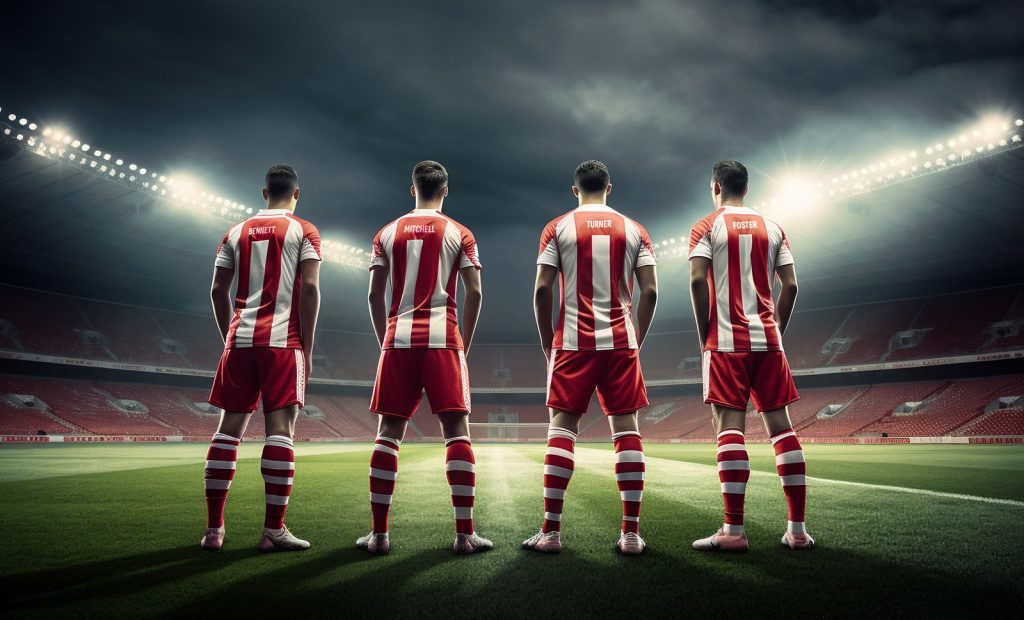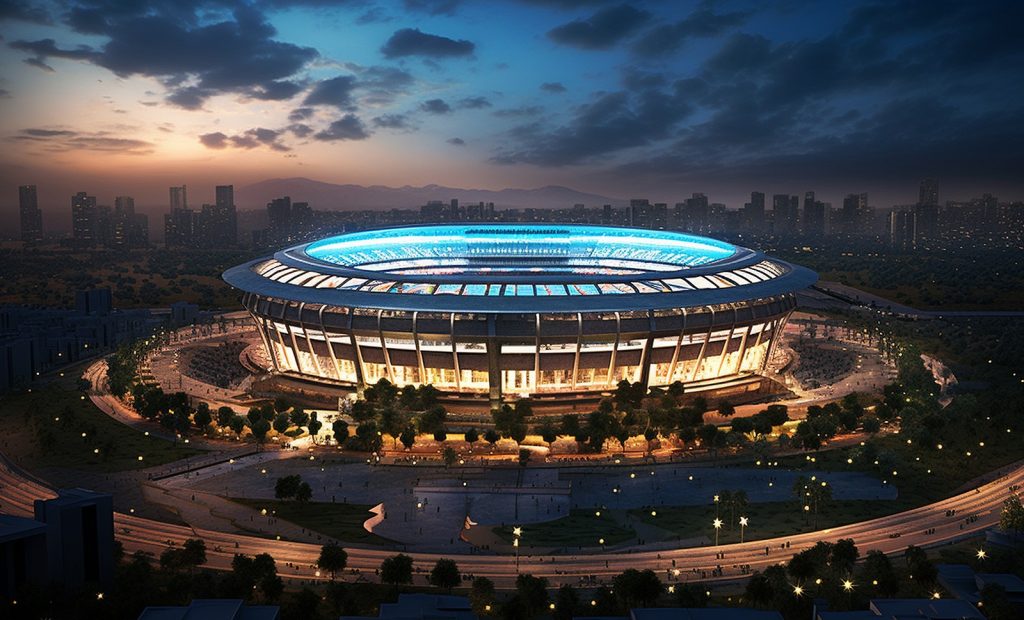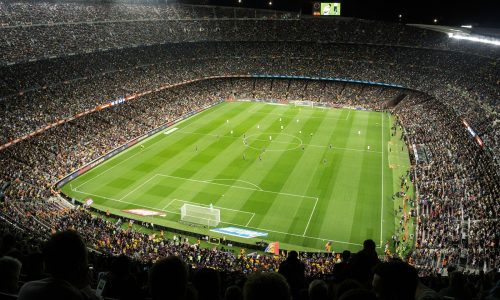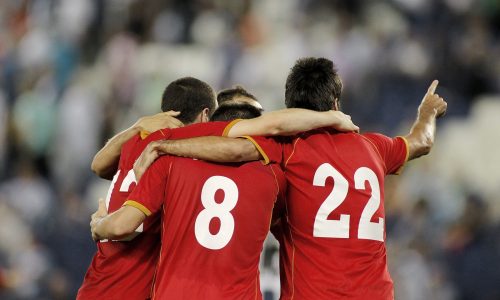
National league football stadiums serve as iconic symbols of passion, rivalry, and sporting excellence around the world. From the grandeur of Wembley Stadium to the historic significance of Maracanã, these venues encapsulate the essence of the beautiful game. This article delves into the global impact of national league football stadiums, exploring their cultural significance, economic contributions, and the fervent atmosphere they generate on matchdays.
The Estadio Azteca in Mexico City holds a revered status, having hosted historic moments in football history, including the infamous “Hand of God” goal by Diego Maradona during the 1986 FIFA World Cup.
Cultural Significance
National league football stadiums transcend mere sporting venues; they are cultural landmarks deeply ingrained in the fabric of their respective societies. For instance, the Estadio Azteca in Mexico City holds a revered status, having hosted historic moments in football history, including the infamous “Hand of God” goal by Diego Maradona during the 1986 FIFA World Cup. Similarly, the Camp Nou in Barcelona stands as a symbol of Catalan identity, where football becomes a conduit for expressing regional pride and solidarity.
The economic impact of national league football stadiums extends far beyond matchdays. These venues serve as hubs for commercial activities, attracting tourists, businesses, and investment to their surrounding areas. For example, the Emirates Stadium in London’s vibrant district of Islington has revitalized the local economy, with restaurants, bars, and hotels thriving on matchdays and non-matchdays alike.
Moreover, stadium tours, merchandise sales, and corporate events contribute significantly to the revenue streams of football clubs and their communities.

One cannot overlook the electrifying atmosphere that permeates national league football stadiums on matchdays. The roar of the crowd, the sea of colors, and the chants echoing through the stands create an unparalleled spectacle. Whether it’s the deafening noise of Borussia Dortmund’s Signal Iduna Park or the passionate support of Boca Juniors at La Bombonera, these stadiums become cauldrons of emotion, inspiring players and captivating audiences worldwide.
- Individuals
- Organizations
- Companies
Many national league football stadiums boast architectural brilliance, blending modern design with cultural heritage. The Allianz Arena in Munich, with its distinctive illuminated façade, epitomizes cutting-edge architecture and engineering. Meanwhile, the Estádio do Maracanã in Rio de Janeiro, an architectural marvel since its inauguration for the 1950 FIFA World Cup, continues to captivate with its iconic elliptical shape and towering concrete pillars.
Community Engagement
Beyond the confines of football matches, national league football stadiums foster community engagement through various initiatives. Clubs organize grassroots programs, coaching clinics, and charitable events to promote inclusivity and social cohesion.

The Juventus Stadium in Turin, for instance, hosts youth development programs aimed at nurturing talent and fostering a love for the sport among local communities, thereby leaving a lasting legacy beyond the pitch.
Globalization Challenge
Despite their significance, national league football stadiums face challenges such as aging infrastructure, environmental concerns, and accessibility issues. However, these challenges present opportunities for innovation and sustainable development. Stadiums like the Mercedes-Benz Stadium in Atlanta have implemented eco-friendly measures, including solar panels and rainwater harvesting, setting a precedent for environmentally conscious stadium management.
National league football stadiums represent more than just venues for sporting events; they embody the collective spirit, passion, and identity of communities worldwide. From the economic benefits they bring to the cultural significance they hold, these stadiums serve as pillars of society, uniting people from diverse backgrounds in celebration of the beautiful game.
As they continue to evolve and innovate, national league football stadiums will remain timeless symbols of athleticism, camaraderie, and human achievement.



The origins of national league football stadiums can be traced back to the early 20th century when clubs began constructing purpose-built venues to accommodate growing fan bases. Iconic stadiums such as Old Trafford in Manchester and Anfield in Liverpool have stood the test of time, serving as bastions of tradition and nostalgia.
These historic grounds evoke memories of legendary matches, iconic players, and fervent supporters who have passed down their passion through generations.

As football grew in popularity and commercialization, clubs embarked on ambitious modernization projects to enhance fan experiences and revenue streams. The renovation of Wembley Stadium in London, completed in 2007, exemplifies this trend, transforming the iconic venue into a state-of-the-art arena capable of hosting international events and concerts. Similarly, the renovation of the Estádio do Maracanã in Rio de Janeiro for the 2014 FIFA World Cup showcased Brazil’s commitment to modernizing its football infrastructure while preserving the stadium’s historic legacy.
National league football stadiums have undergone a remarkable transformation, evolving from simple venues for sporting events to multifaceted entertainment complexes that cater to the diverse needs of modern fans. As they continue to embrace innovation, sustainability, and digitalization, these stadiums will remain at the forefront of the global football landscape, uniting fans in their shared love for the beautiful game while preserving the rich heritage and traditions that define the sport.




Edward Hardy
Donec odio quam, hendrerit sit amet elit non, maximus sagittis velit. Proin ullamcorper ante quis mauris bibendum, sed fringilla massa vestibulum. Nam in sollicitudin est. Pellentesque malesuada auctor viverra. Aenean eleifend augue nibh, eu ornare augue commodo sit amet.
Edward Hardy
Nulla faucibus elit at eros pellentesque, ornare semper nibh egestas. Vestibulum tristique nunc in placerat consequat. Vivamus condimentum arcu ante, a ornare urna interdum sit amet. Aenean ornare risus nec nisi vulputate vehicula finibus sit amet dui.